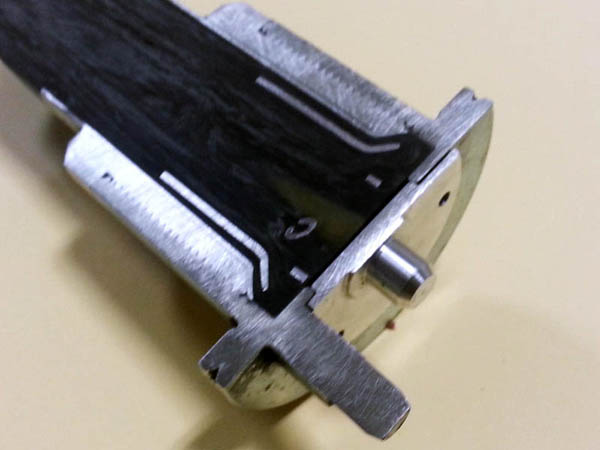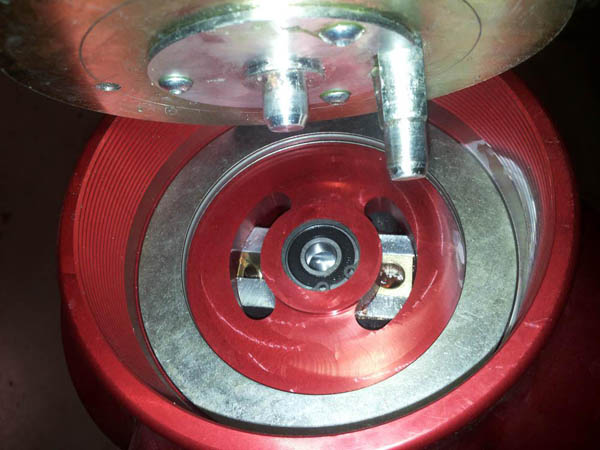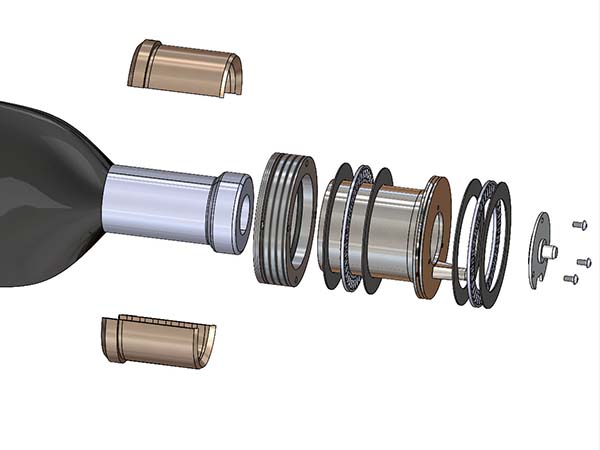Blade anchorage technology
As known, the FP-propeller Srl Company manufactures a wide variety of propellers with in-flight variable pitch.
The aim of FP-propeller Srl is to give to each airplane its best propeller, the one that meets the needs of the airplane pilot at the best.
The variable pitch hub is FP ownership project . It is tested in accordance with FAR 35 and ASTM standards.
TBO of the hub is 2000 hours.
We must consider that the variable pitch hub is a mechanical device to be made by high precision mechanics. In particular, the blade shank must rotate with high precision and rigid motion in its seat, on its axis. Ball and roll bearings are assuring this high quality motion.
Concerning blades, two categories are used:
-- manufactured by FP in accordance to pending patent;
-- manufactured by leading world producers of propellers: Sensenich, Warp Drive, Duc, Powerfin, Kievprop, Whirl Wind.
Blade made by FP has the metal shank bound and immersed in the blade root.
Blades made by other manufacturers have the root in composite material, unsuitable for precise anchorage in the variable pitch hub. The problem is solved by bonding the blade root in its metal shank, which becomes the anchor device of the blade to the hub .
The metal shank is then fixed to the hub by roll bearings, free to rotate on the axis of the blade.
The technology of anchorage of the blade to its metallic shank is of fundamental importance for the safe operation and for the lifetime of the entire propeller.
Firstly, the binding strenght between blade and metal shank must retain the centrifugal load due to the rotation of the propeller.
Therefore, taking into account the shape of the blade shank, we realize the metal shank in the form of "glass".
The blade is housed in the glass and secured in with a threaded ring-shaped "collar".
The ring is screwed into the "glass". (see fig. 1).
The blade retention load, several tons, is retained by the ring and, therefore, by the thread that secures the ring to the "glass".
In simple terms, our blades are retained by mechanical interlocking.
Initially, the shank of the blade is aligned with the axis of the glass by a high precision mask and thus cemented permanently.
The cementing of the shank is achieved by resin injection within the thin walls between blade root and metallic glass.
fig. 1 example of anchoring blades propellers FP-propellerThe cementing technique, result of specific experimental study, has been tested in cooperation with the Department of Industrial Engineering at the University of Bologna.
As final result, blade and metal shank become one body. In other words, blade and metal shank does not move in any direction with respect one to the other.
The rotation movement of the blade for pitch changing is achieved by moving the peripheral pivot on the metal shank bottom. As it can be seen in Fig. 1), FP blades also have the central pivot, in the bottom of the metal shank. The central pivot is fixing the rotation axis of the blade, permanently and with precision.
During the propeller assembly, this central pivot is housed in the bearing / bushing placed in the body of the hub, at the center of the blade seat (see Fig. 2)
With this technique, of blade anchorage, you get the following benefits.
- The accuracy of the angular alignment, i.e. the difference of angle between the propeller blades, is less than 0.1 degrees, and is stable for the entire life of the propeller. By the way, this high precision can be achieved by special tool only.
- Consequently, there are no vibrations due to angular differences between the blades.
- In addition, the blades are easy to mount in the hub, without need of laborious (and inaccurate) adjustments by the installer.
In practical terms, the installation of the propeller FP-propeller is reduced to a very simple operation.
In fact, the mechanical part of the installation job consists of:
- Tightening the 6 screws on the propeller flange /engine shaft
- Insertion and fixing of the blades in the respective seats numbered (fig.2)
No adjustments are required for blade alignment.
The pitch end-run, min and max, are adjusted.
fig.2 Insertion of the blade into the seat
For comparison, some competitors are anchoring the blade in the metal shank but without blocking it permanently.
In front of the questionable "advantage" of being able to disassemble it, this solution "simplified" presents the following drawback: periodically, it is necessary to realign the propeller blades. Indeed, the simple mechanical interlocking is unable to inhibit the continuous, imperceptible rotation of the blade in its root, due to the inevitable vibrations of airplane operation.
Usually, this process of blade realignment involves a "overhaul", with the inevitable costs.
Note: Our business policy is to give to the Pilot a propeller with long-term reliability and durability, with low maintenance costs.
Of course, regular check and maintenance is the safe way to fly in any case.
fig.3 Parts needed for blade anchorage





